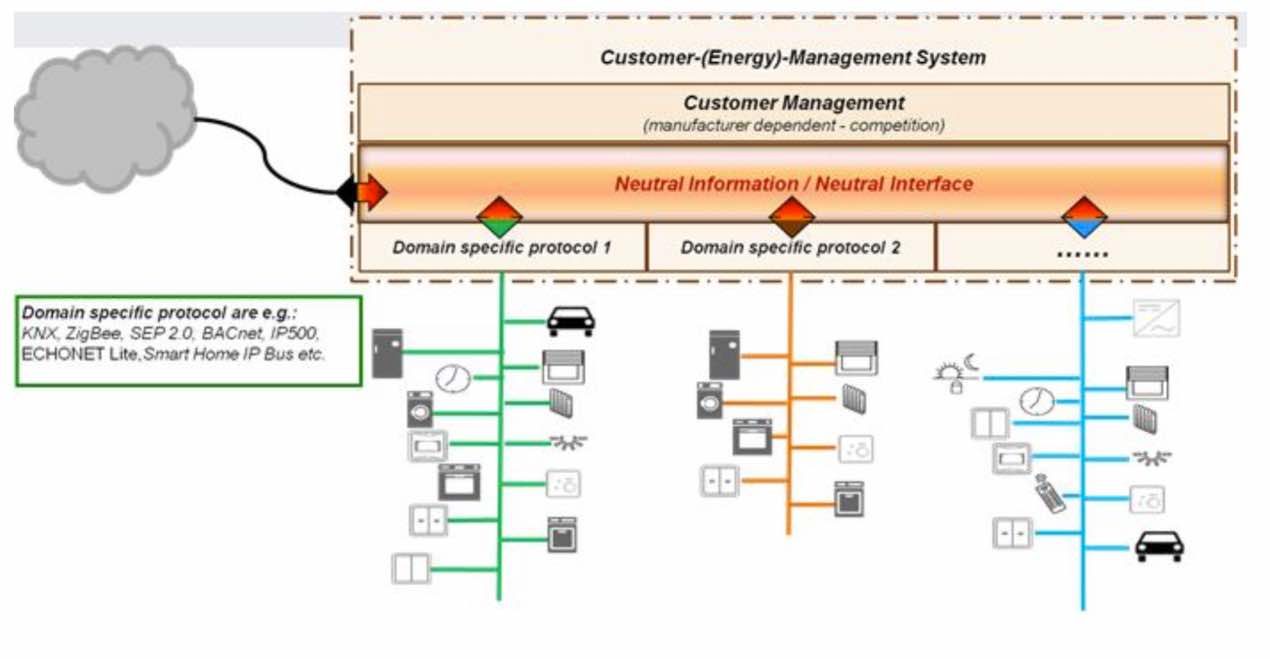In a study on the demand response (DR) potential of so called “Smart Appliances”, which currently is being conducted on behalf of the European Commissions DG Energy, the authors also took a first look at the option of linking the demand to the grid code.
Potential by device categories
The project which started in late 2014 now published a draft of the first report. The assessment puts a number on the level of the power (GW) and energy (GWh) reduction potential for the “Smart Appliances” which are grouped in three categories for household appliances:
- Periodical: Dishwashers, washing machines, tumble dryers and washer dryers
- Continuous: Refrigerators, freezers and water heaters
- Behavioral: Electrical hobs, ovens, hoods and vacuum cleaners
… and six categories for devices with a stronger link to the building:
- Electric heating (permanent appliances): Radiators, boilers, heat pumps and circulators
- Ventilation (permanent appliances): extraction fans, heat recovery ventilation units and air handling units
- Air conditioning (permanent appliances): Residential and non-residential air conditioners
- Chargers (low power) (periodical appliances)
- Battery storage systems (permanent appliances)
- Lighting (behavioural appliances)
There are countless statistics and derived numbers for each of the above.
The really big demand response potential falls into the obvious categories: heating and cooling and future battery storage systems.
Reading voltage and frequency
So far the Ecodesign process mainly looked at the reduction of energy consumption in terms of “kWh”, because this directly translates to EURO and — hopefully — to reduced CO2 emissions. And the obvious path for triggering the flexibility options so far always seemed to be “Smart home / grid” command and control technologies … which are provided by some of todays products.

This images shows a typical Smart Home setup and is a good example for the complex, fragile, expensive and insecure architecture which the industry is envisioning.
However, from our perspective it is section 1.3.3 and 1.4.3 which contain the really interesting observations.
A special case of DR is the one where smart appliances measure a local grid parameter and autonomously respond to this …
and the key benefits are identified as well
This type of demand response differentiates itself, as no communication is required from the smart appliance to the outside world. […]
Costs are avoided, no privacy issues emerge and uptake is not hindered for people who lack affinity with networked technology.
Adding grid friendly demand response to the debate will hopefully raise the awareness about the benefits this approach is providing in terms of reduced cost and dramatically improved security characteristics.
Sadly, many “main stream” articles tend to misunderstand the intention of the “grid code aware demand response” and put it into the “big brother” category even when technically it is the total opposite!
As the readers of this blog do know very well, respecting the voltage and frequency is more comparable to the electrical “grid code of honor” and not “1984”.
Request for comments
In its annex section the published report also lists international technical standards and gives a quick overview of the related technologies (OpenADR, ZigBee, KNX, …).
It is still a draft so comments are welcome and can be submitted until 15. July 2015. For details on the commenting process read the projects website.
References
- Website: “Preparatory study on smart appliances in the framework of Ecodesign”, [http://www.eco-smartappliances.eu/Pages/welcome.aspx]
- Koen Vanthournout, Dominic Ectors, Sven Claessens, Jan Viegand, Rainer Stamminger, Jasmin Geppert, Philippe Rivière, Thomas Götz, Sarah Bogaert: “Preparatory study on Smart Appliances, Task1 Scope”, [http://www.eco-smartappliances.eu/Documents/Smart%20appliances_Task%201%20report_draft_150615.pdf], 2015.06.15 Draft
- Christoph Jehle: “Brüssel will entscheiden, wann Waschmaschine und Staubsauger laufen”, [http://www.heise.de/tp/artikel/45/45257/1.html], Telepolis, 2015.06.24